
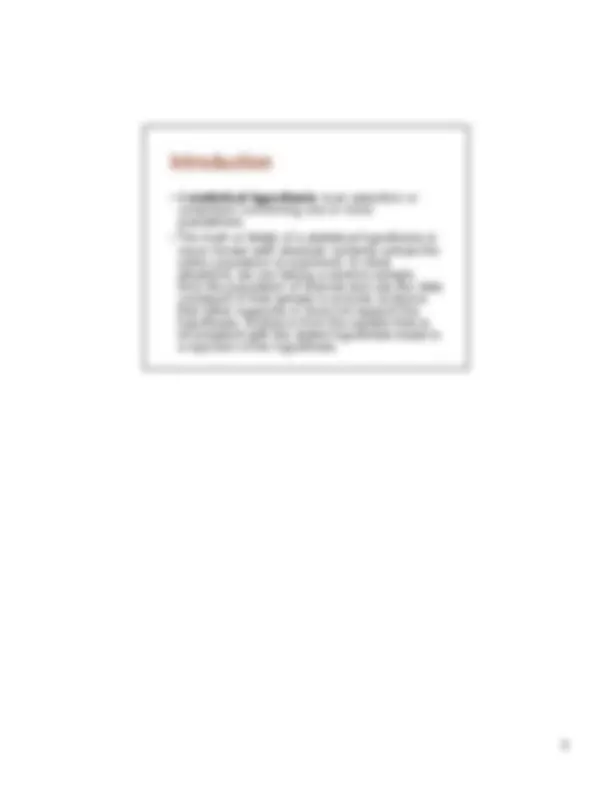
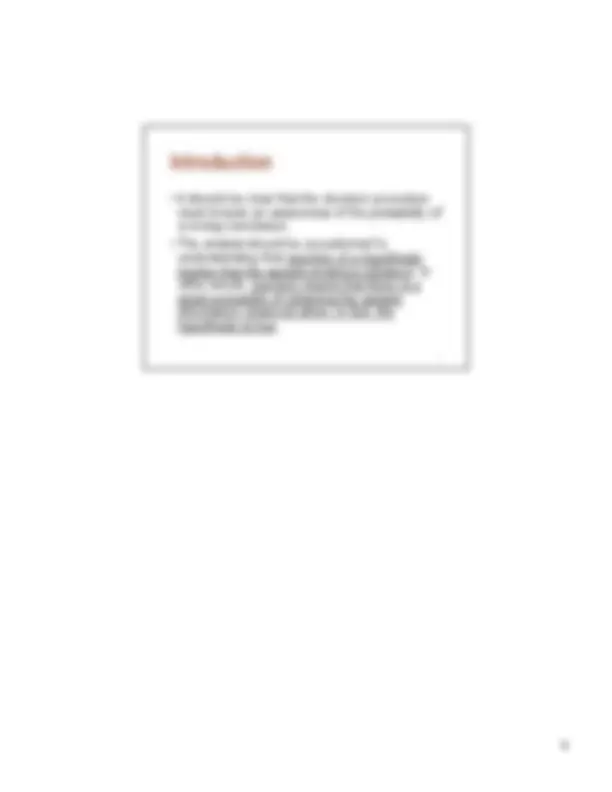
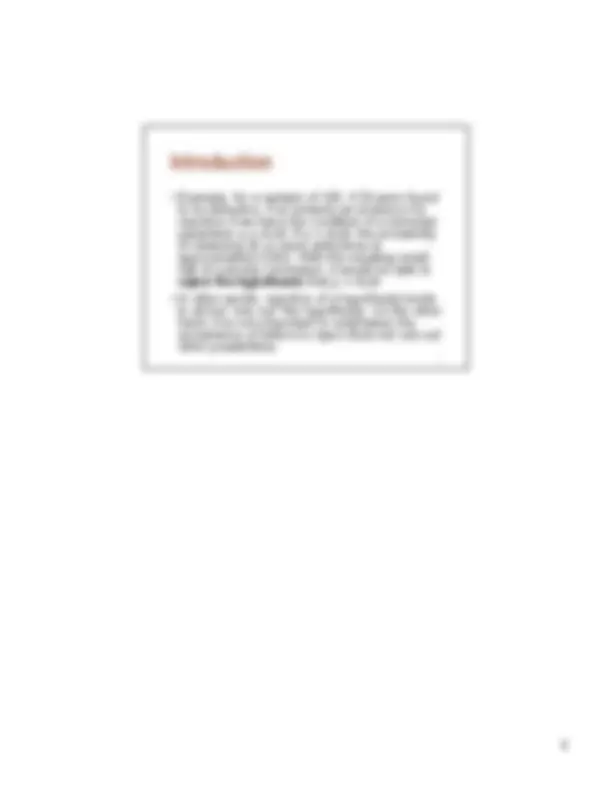
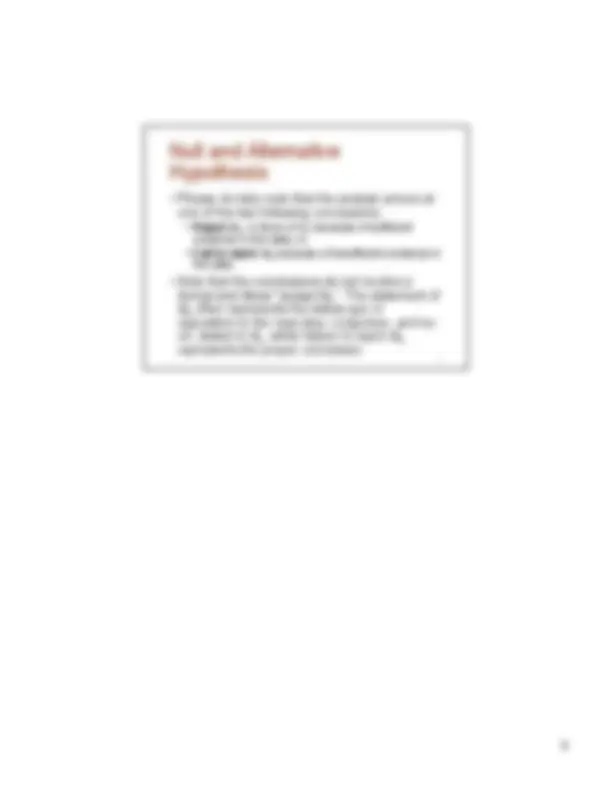
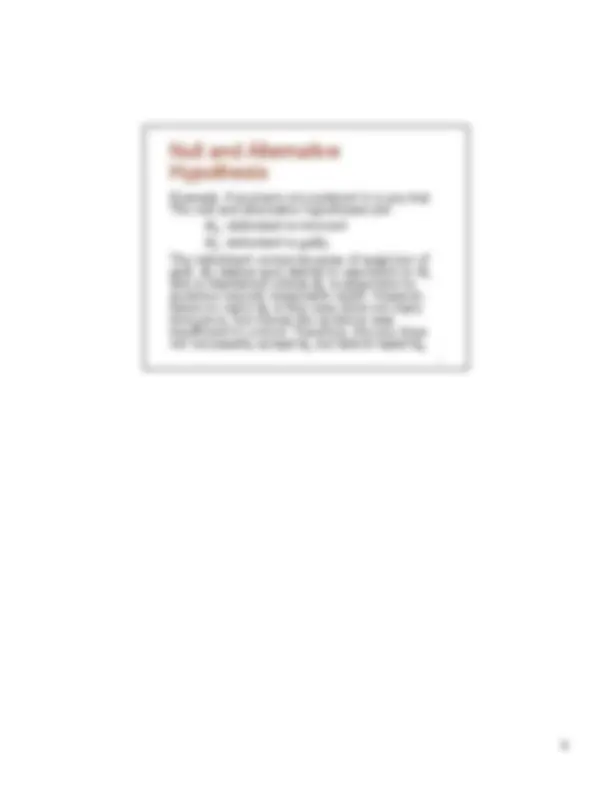
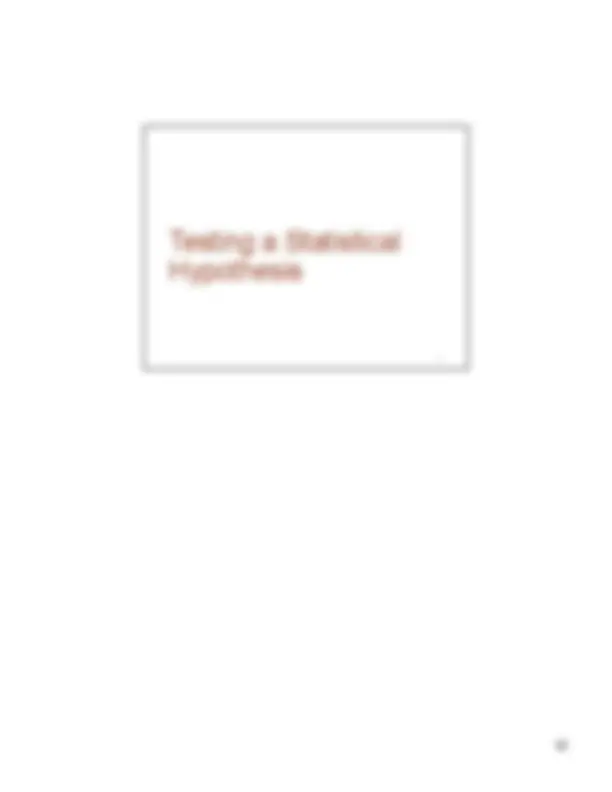
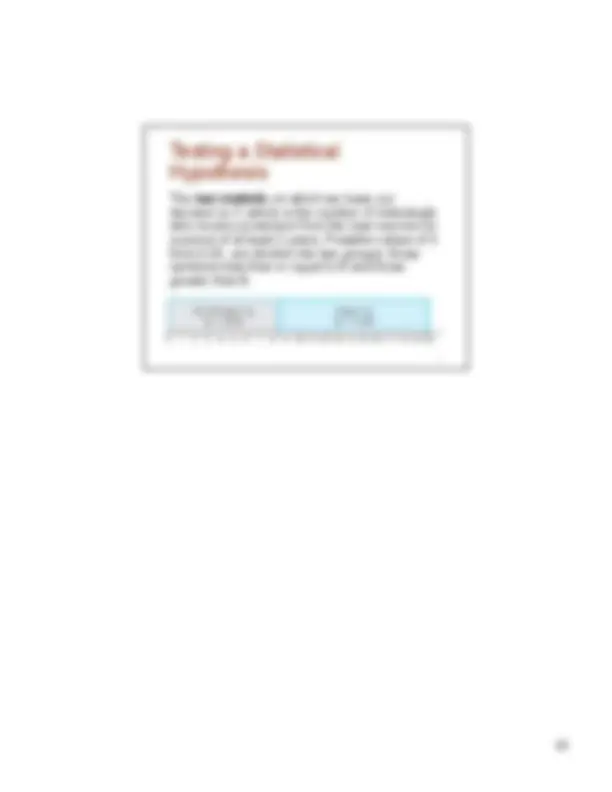
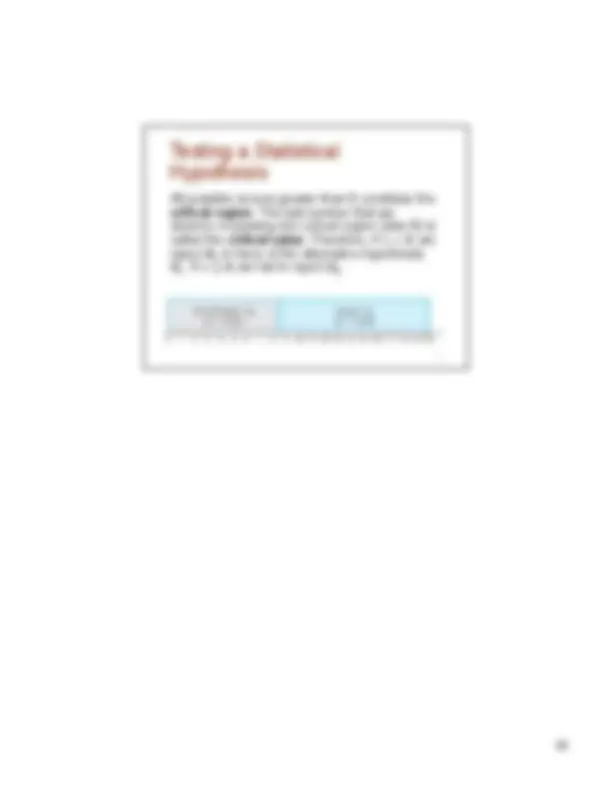
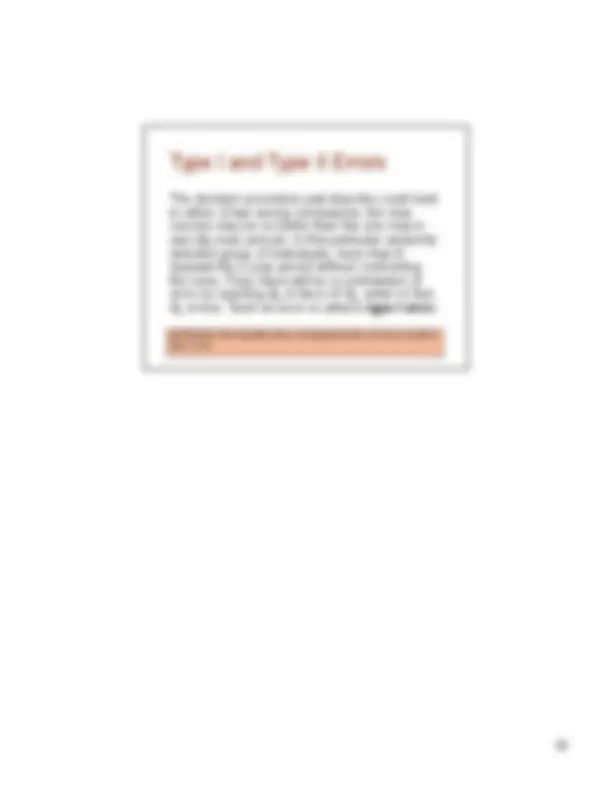
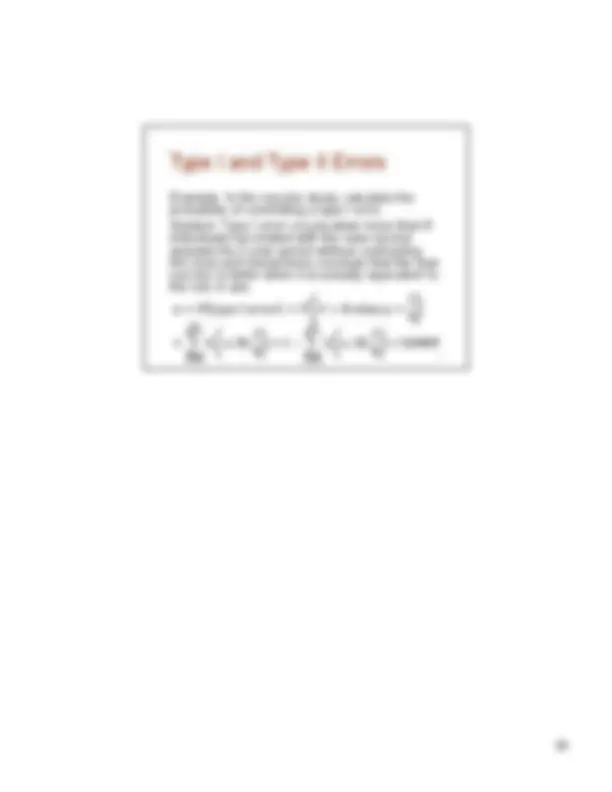
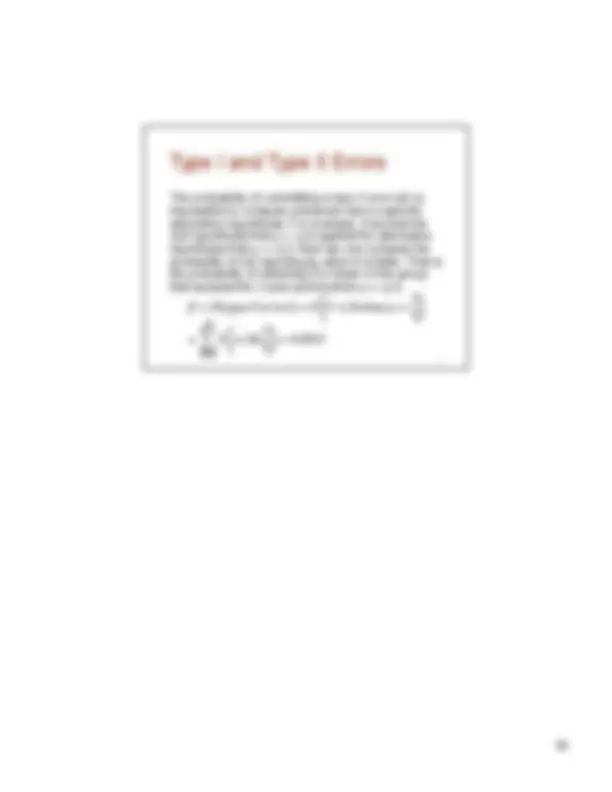
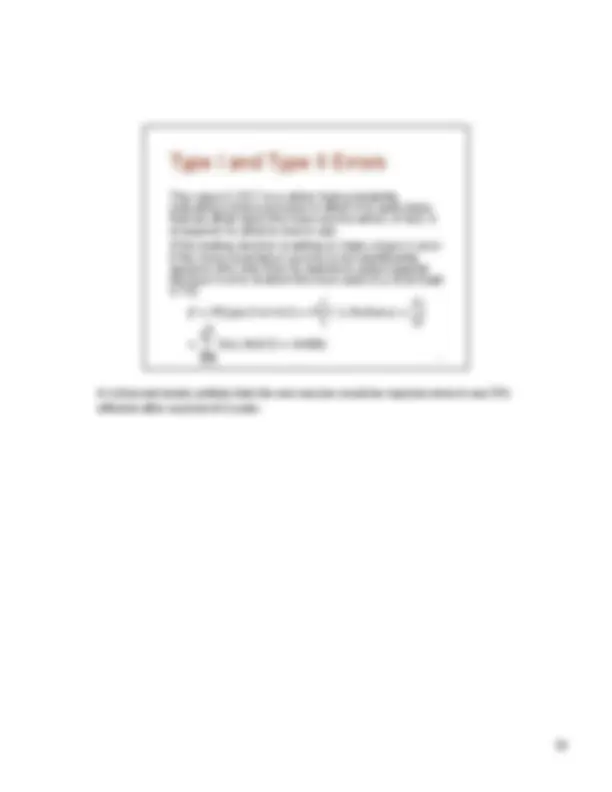
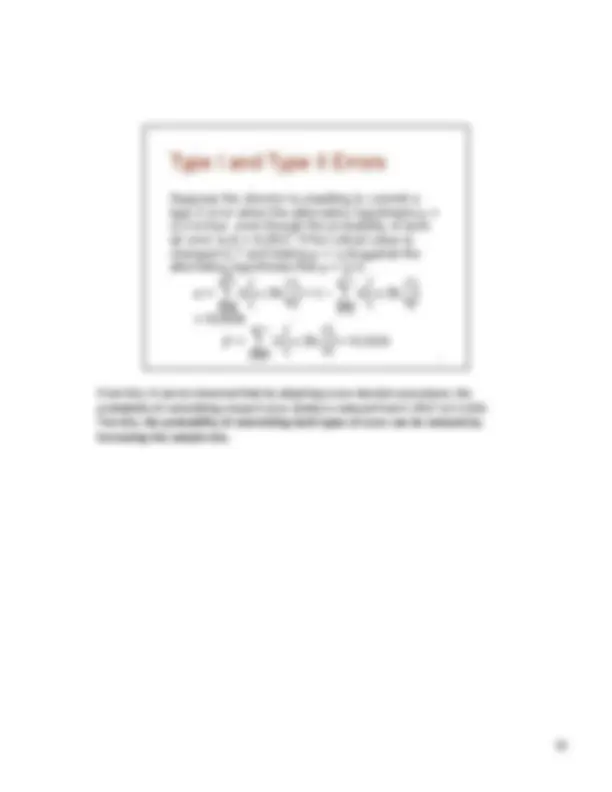
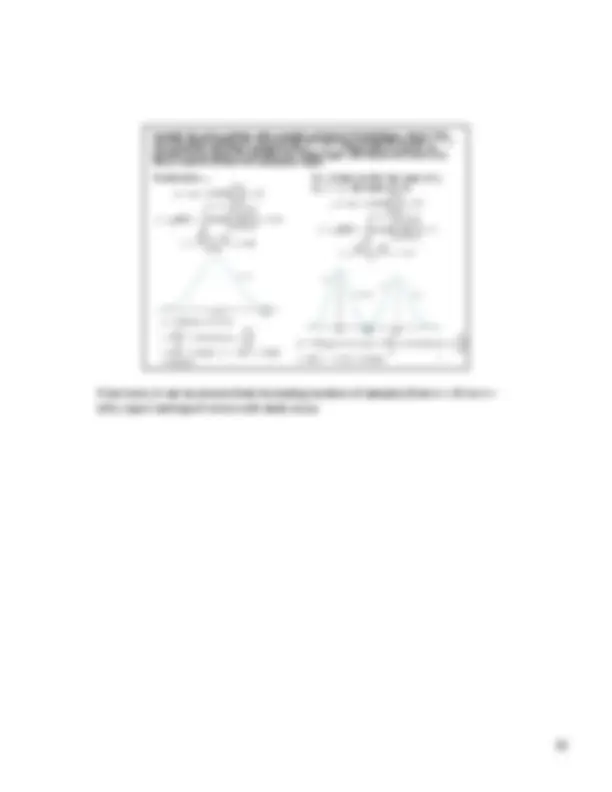
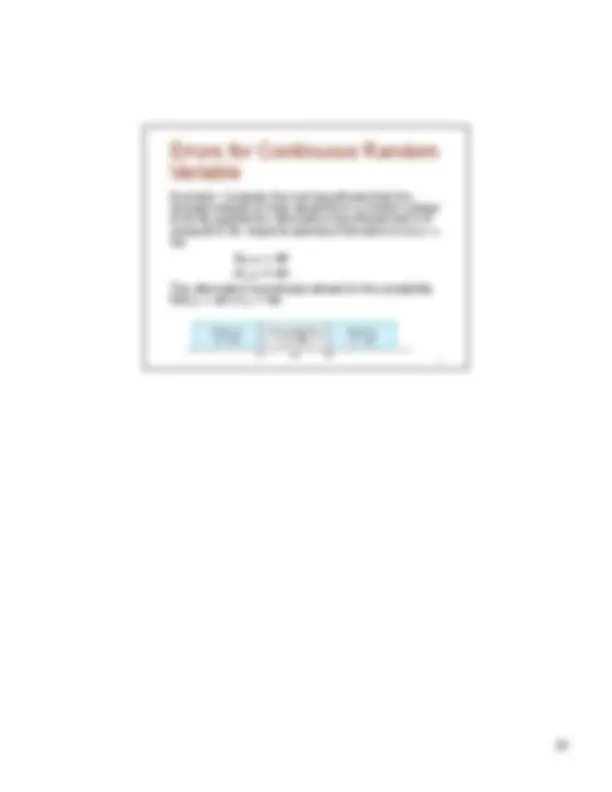
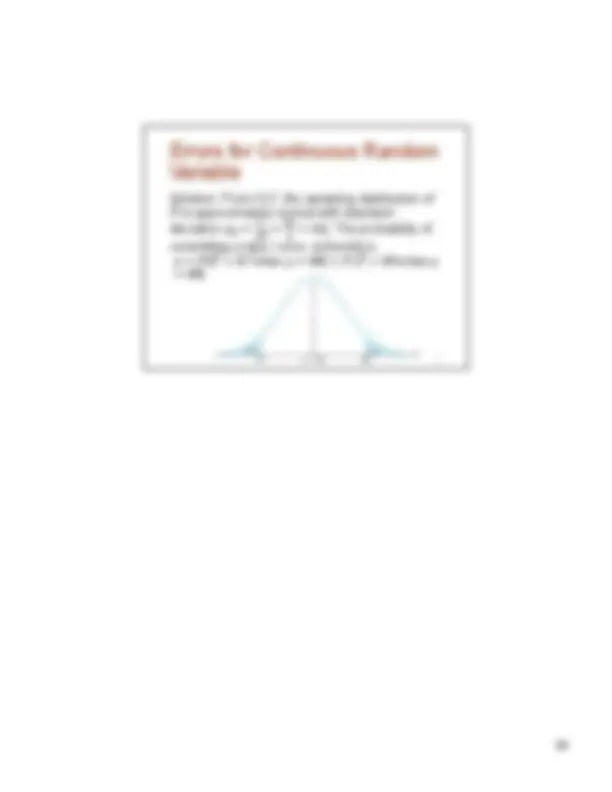
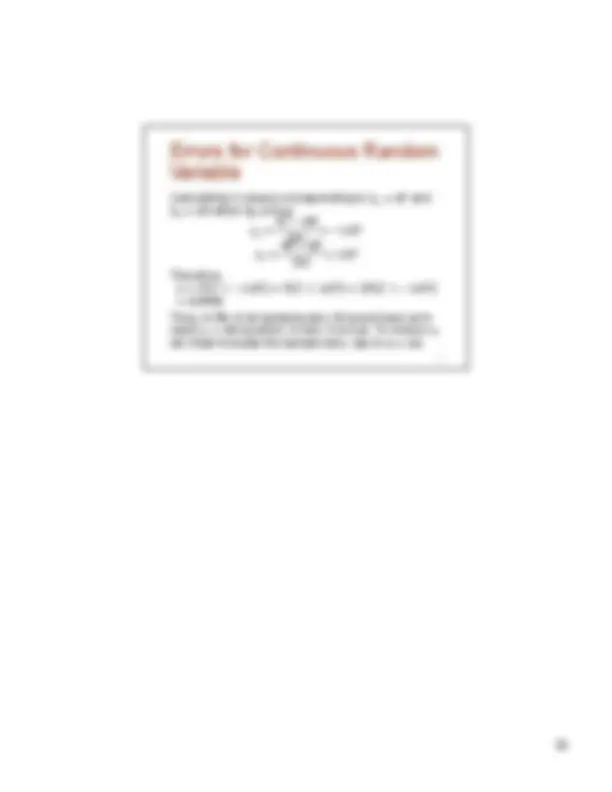
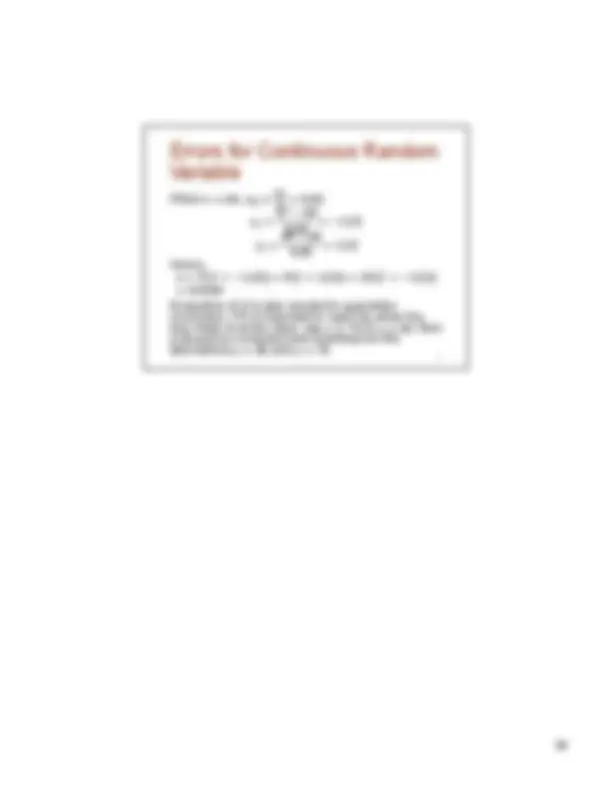
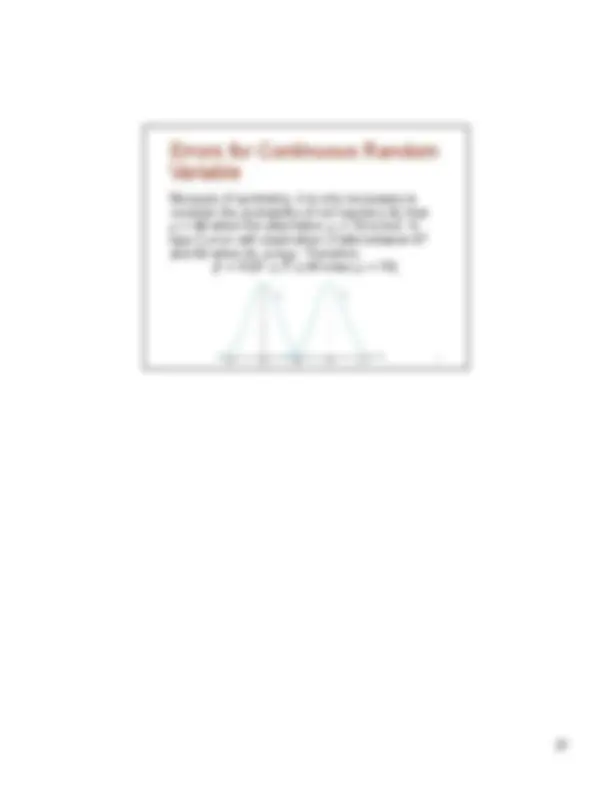
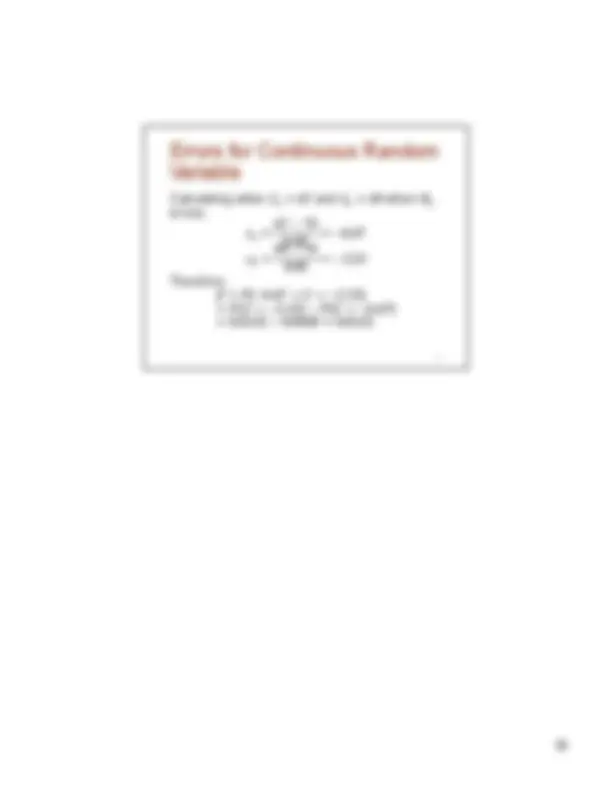
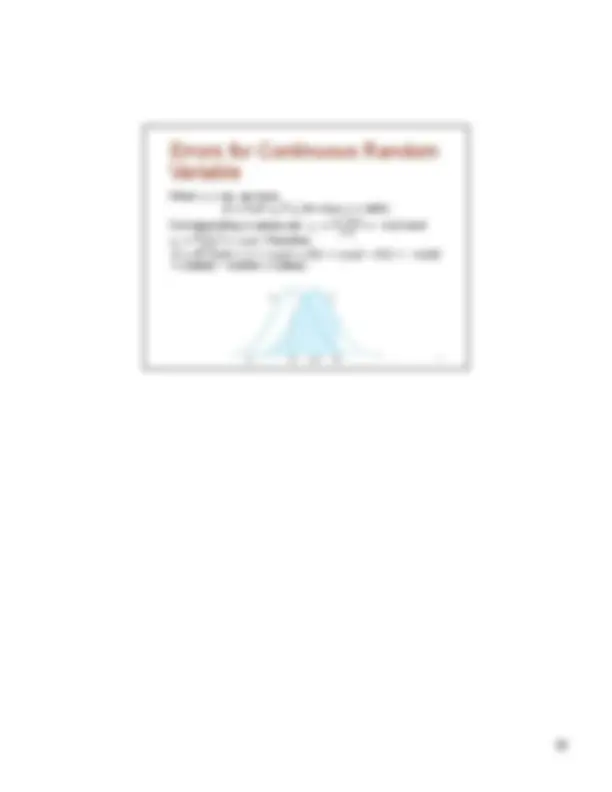
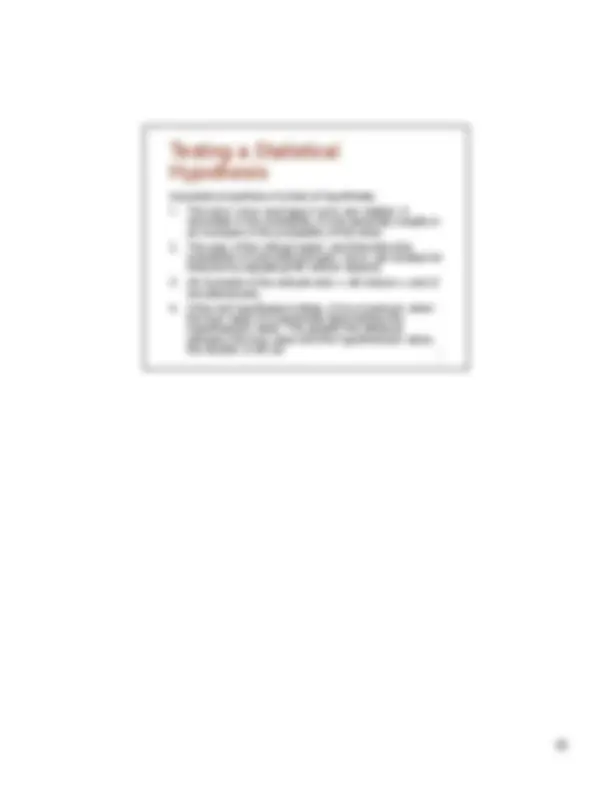
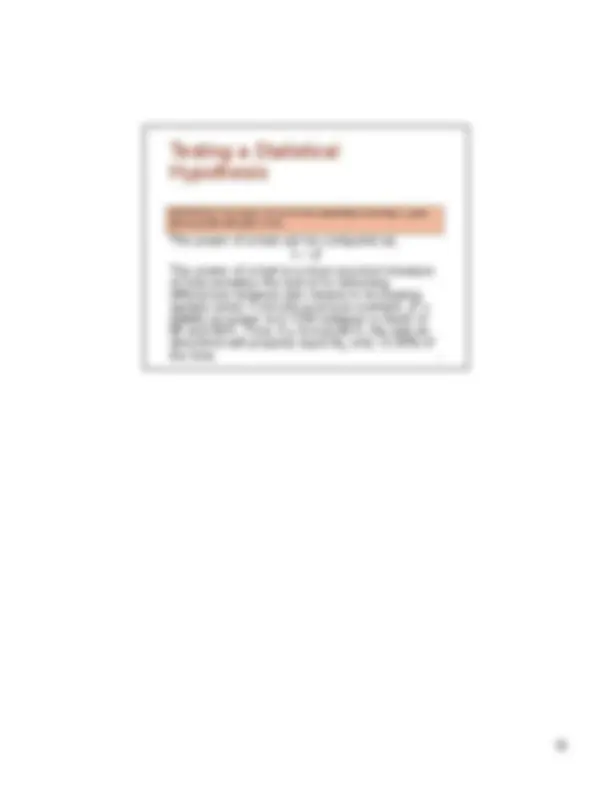
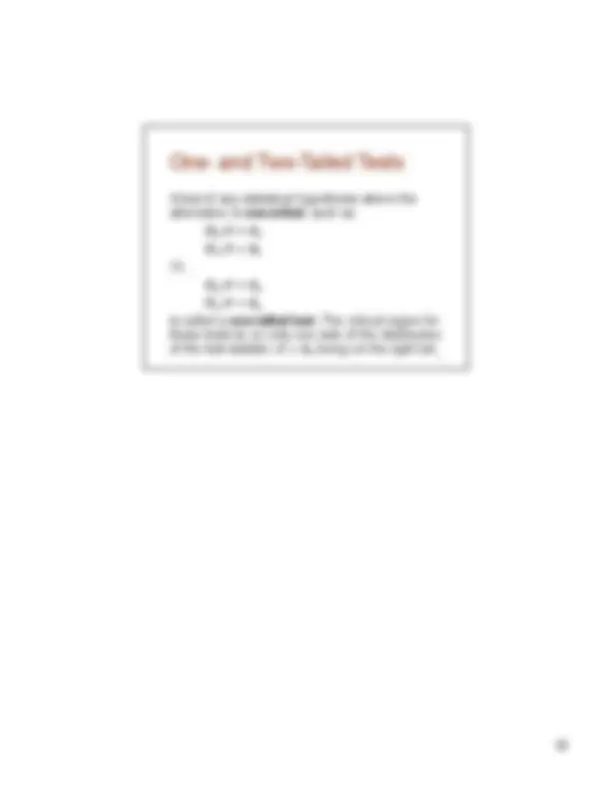
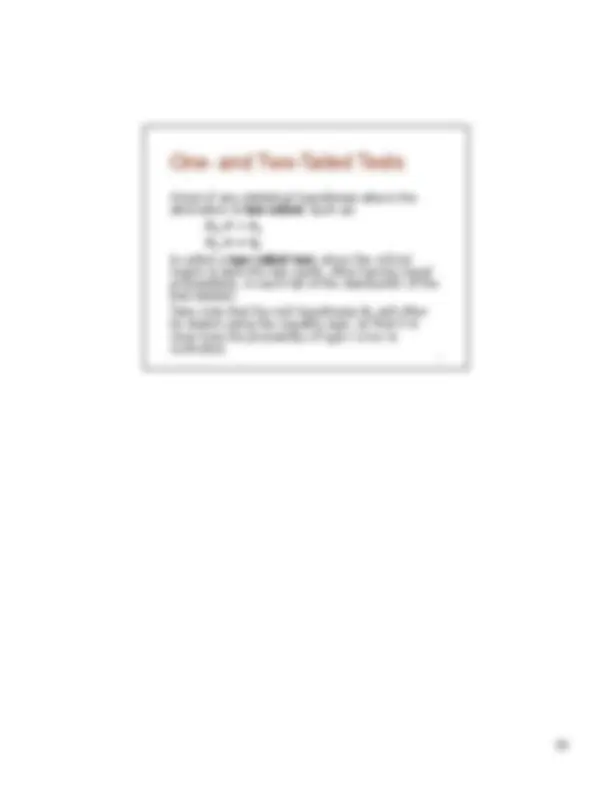
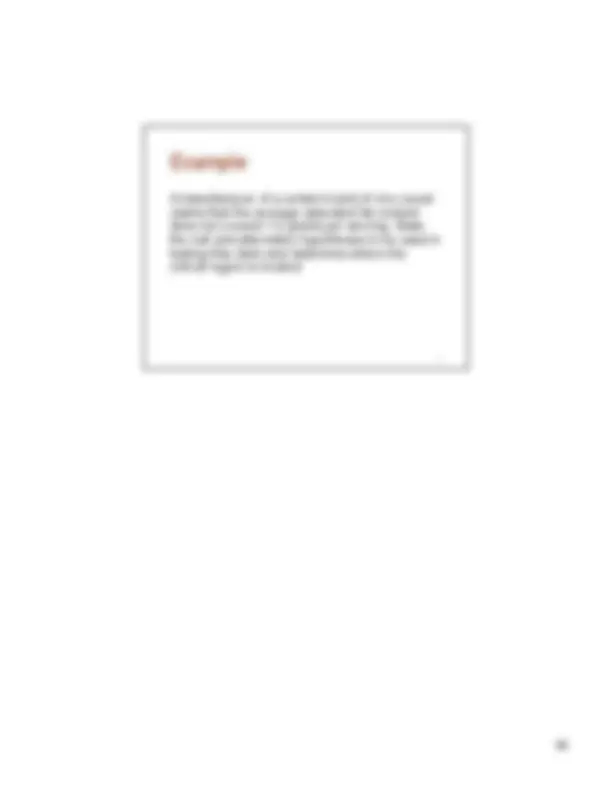
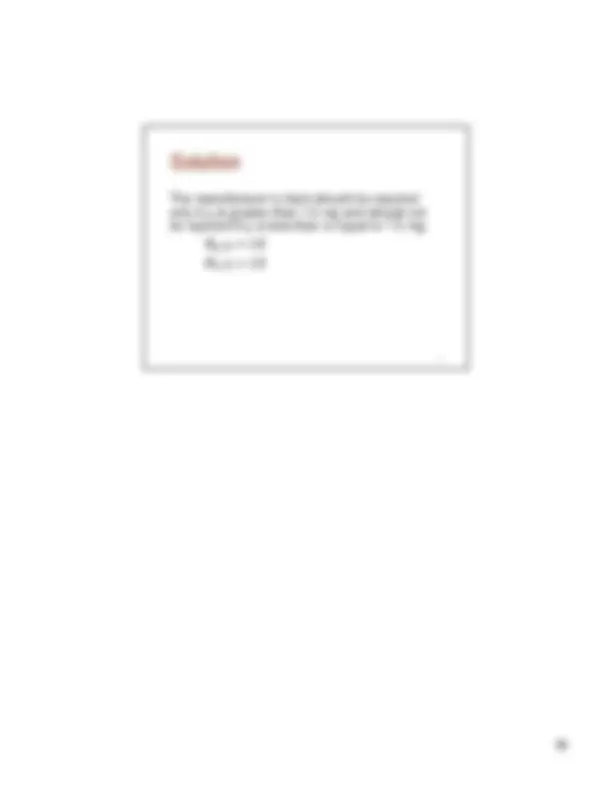
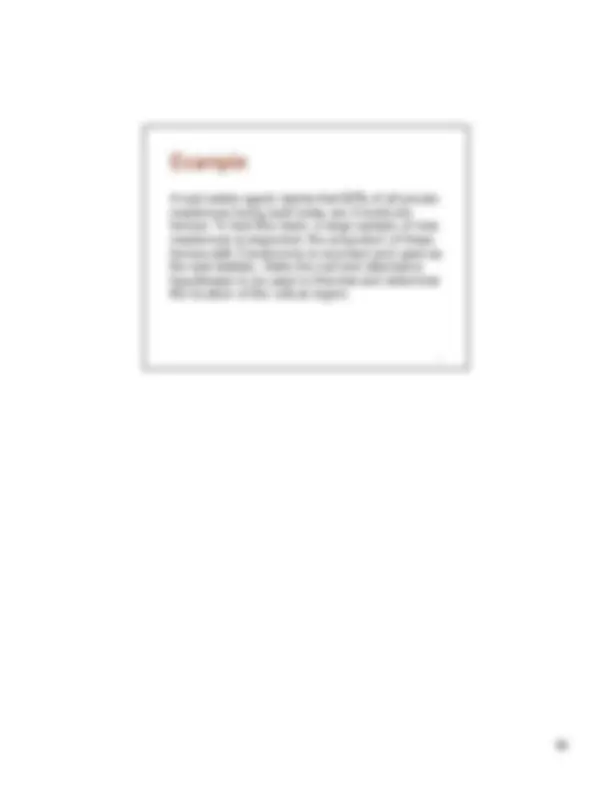
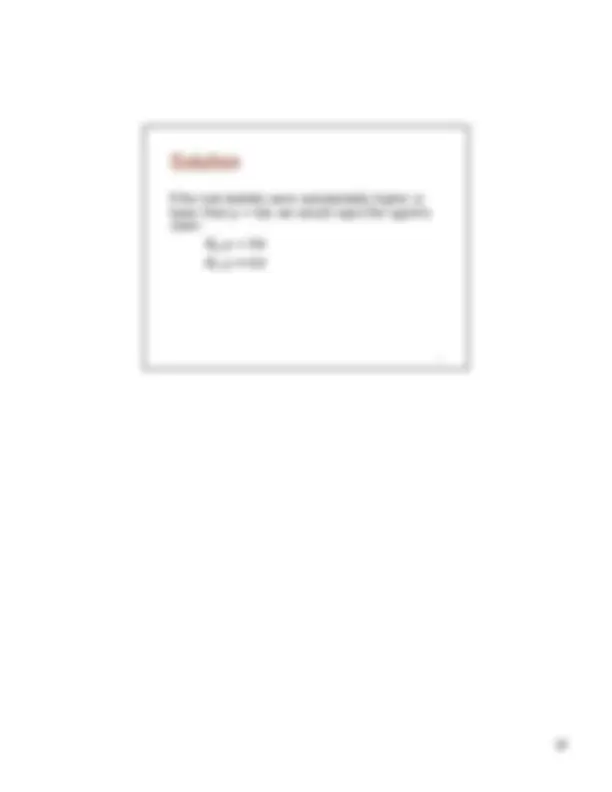
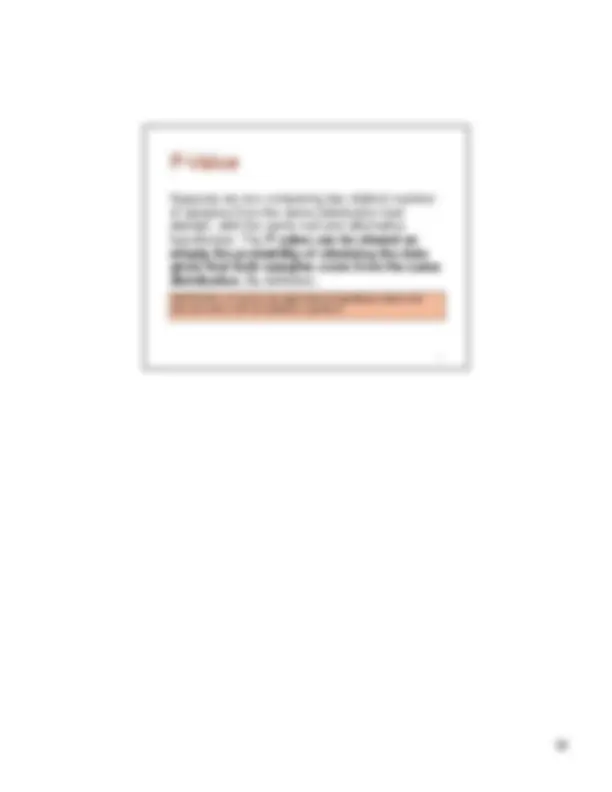
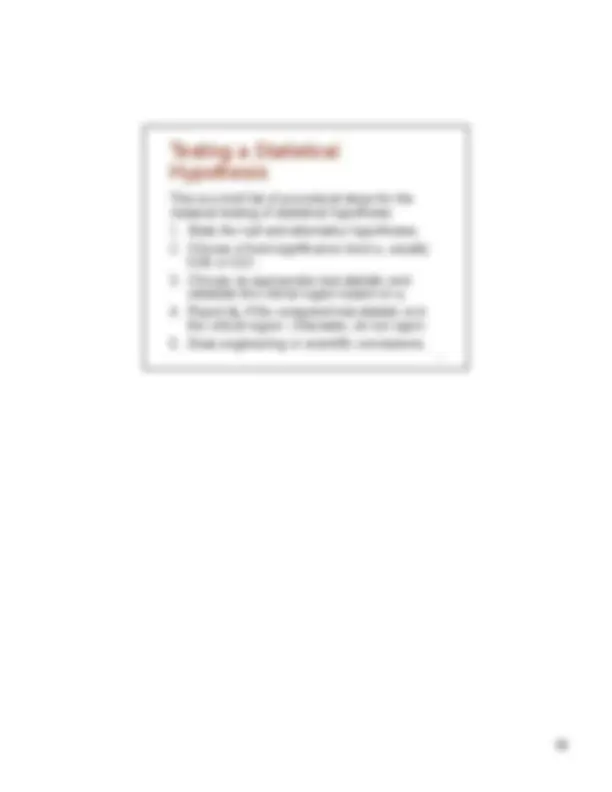
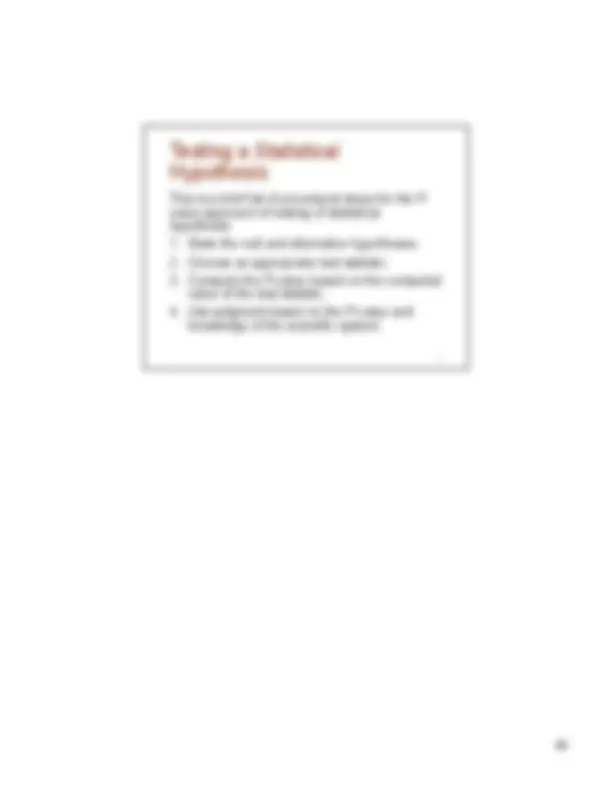
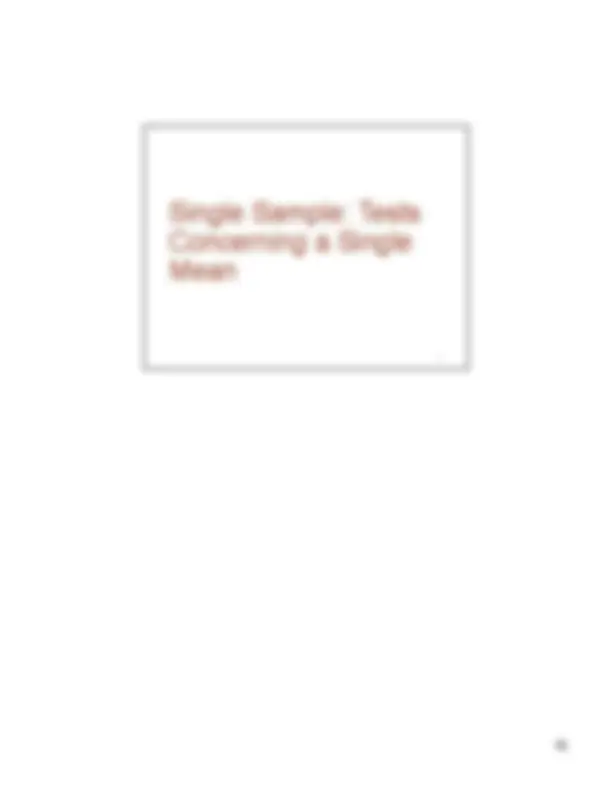
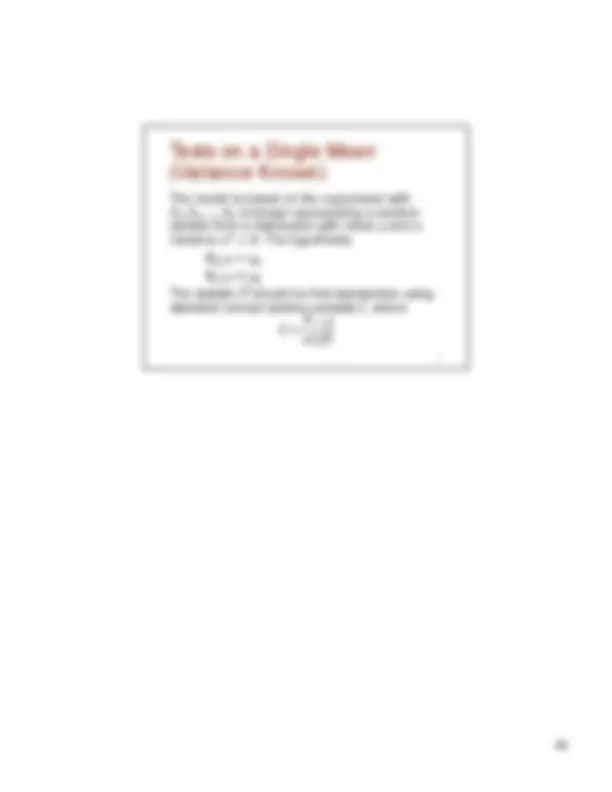
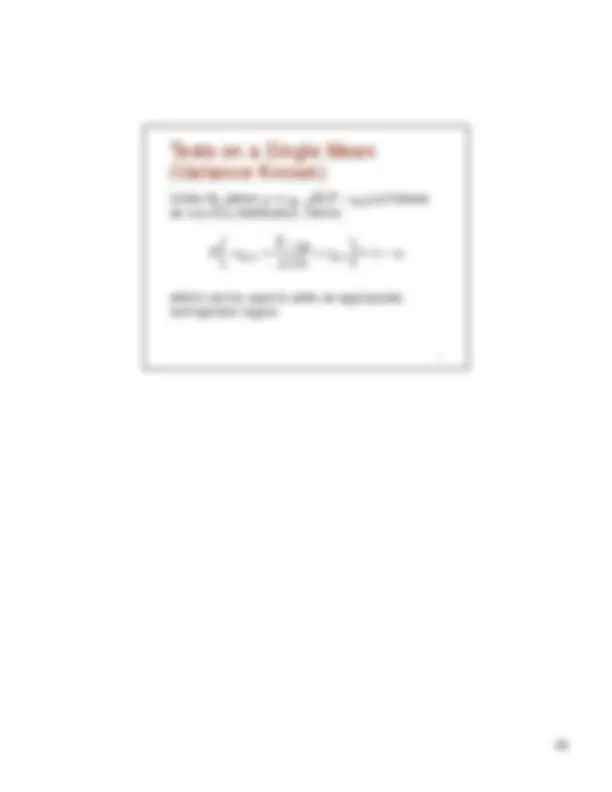
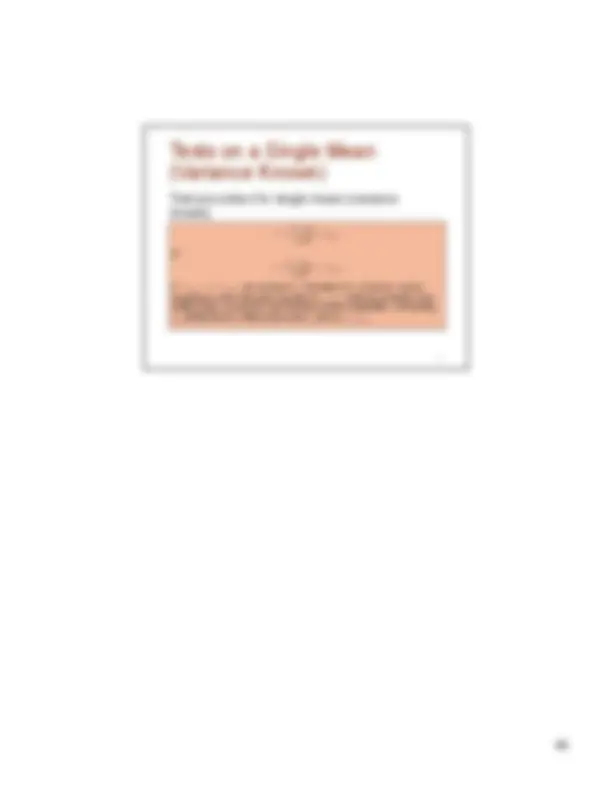
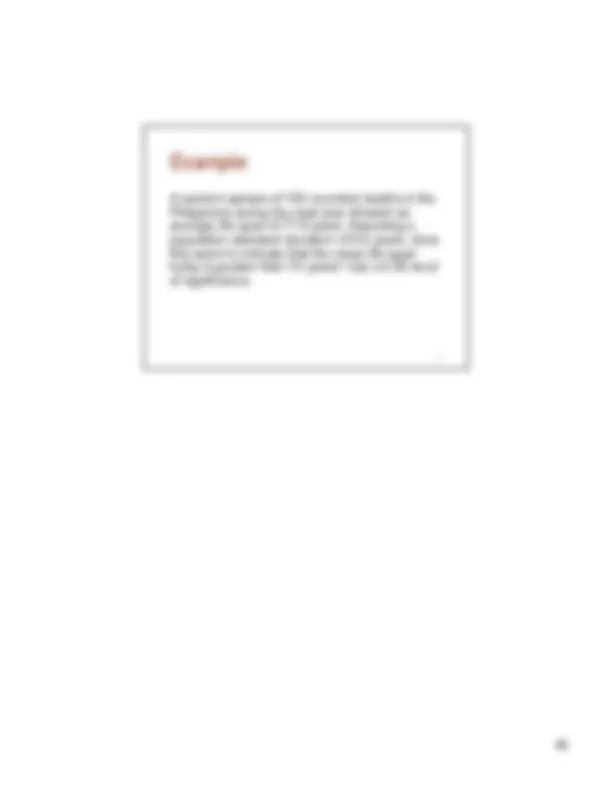
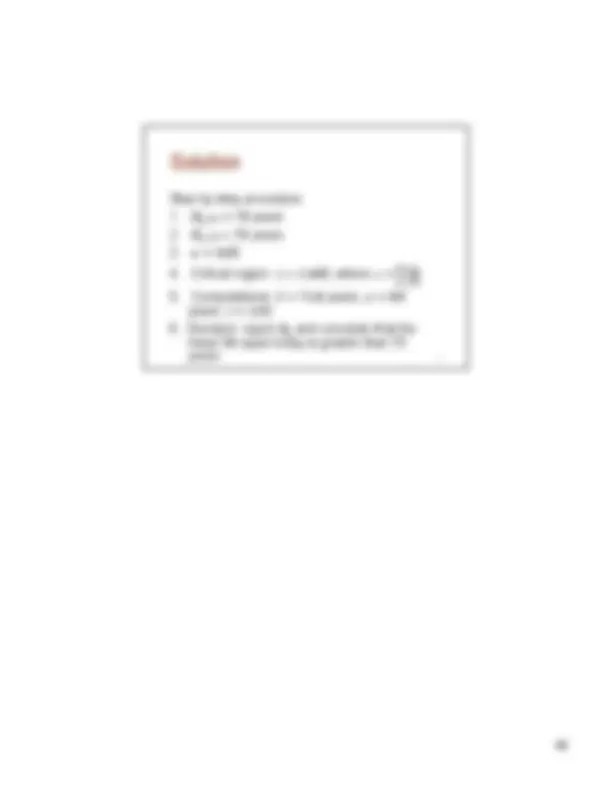
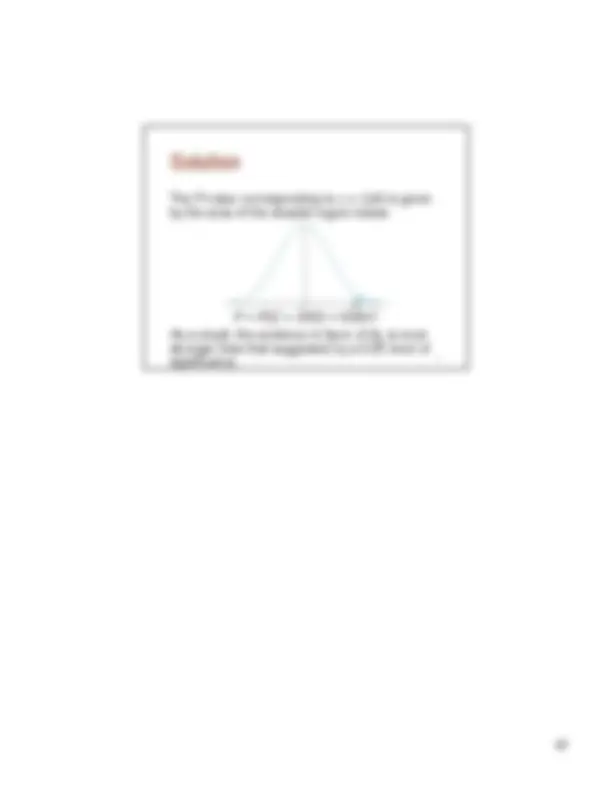
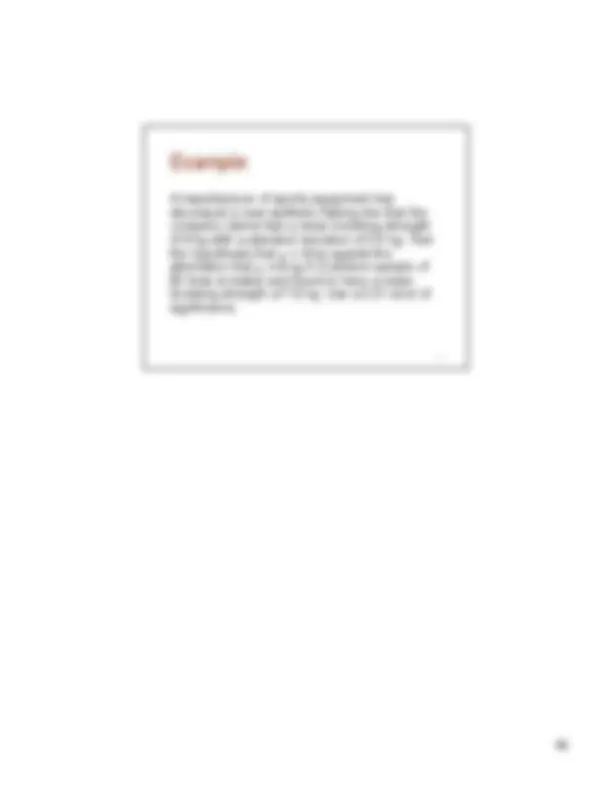
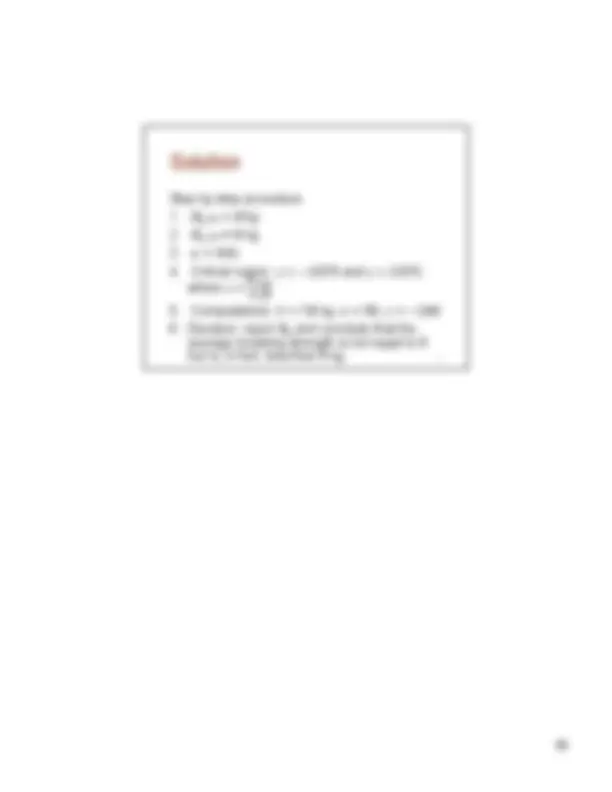
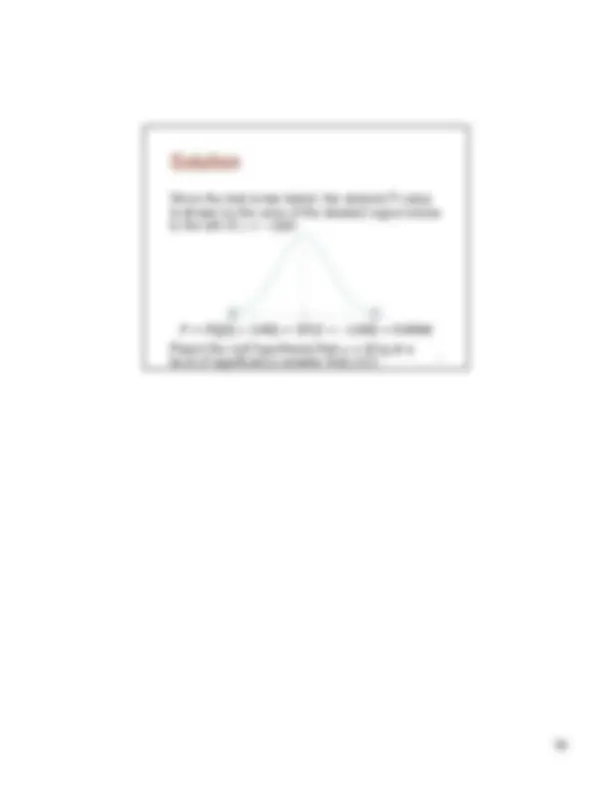
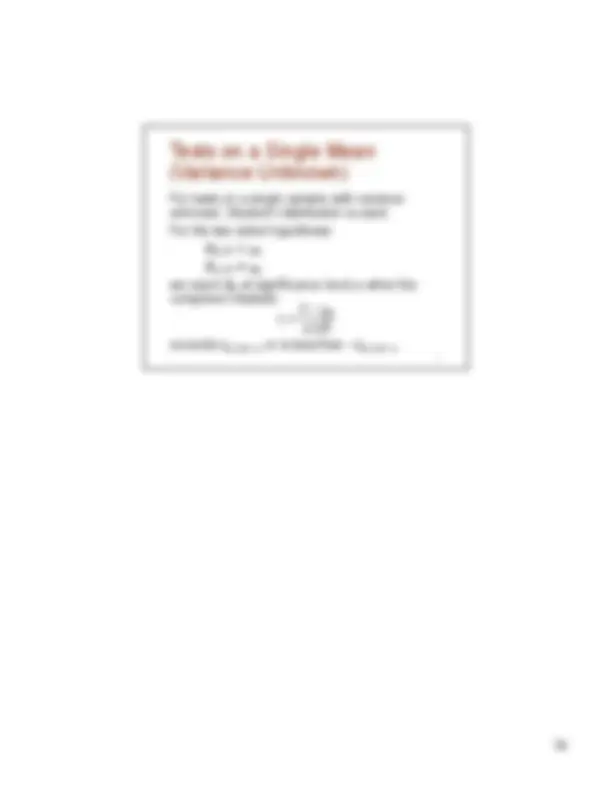
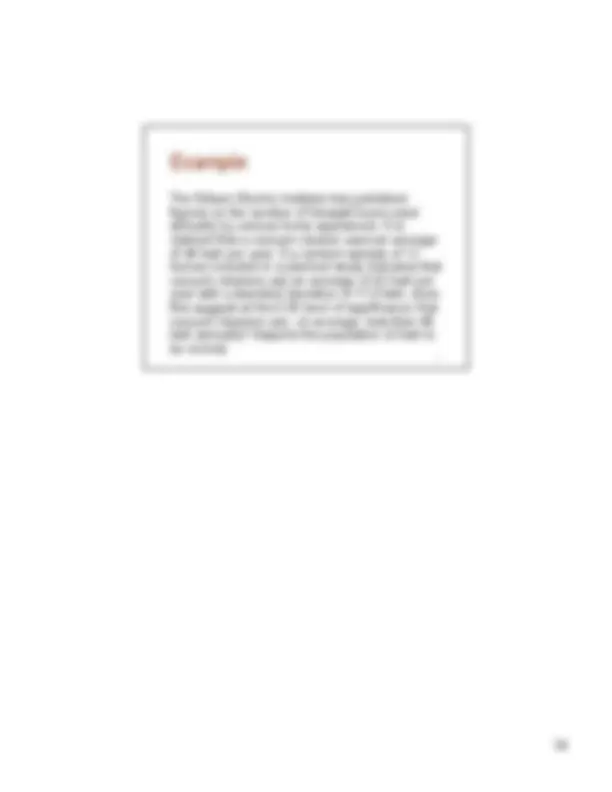
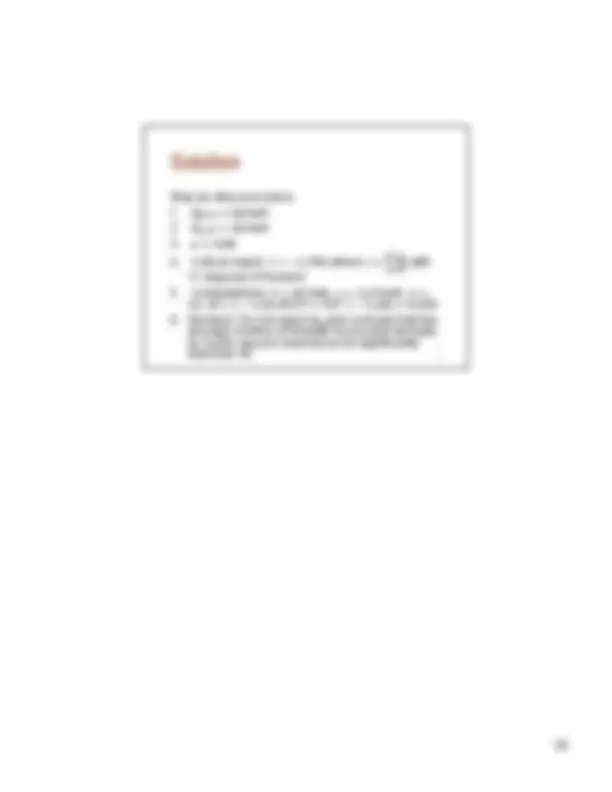
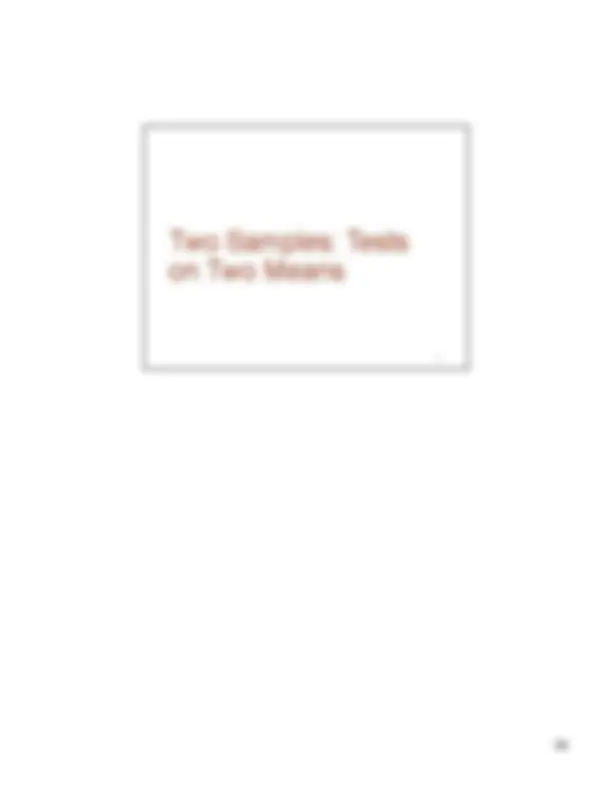
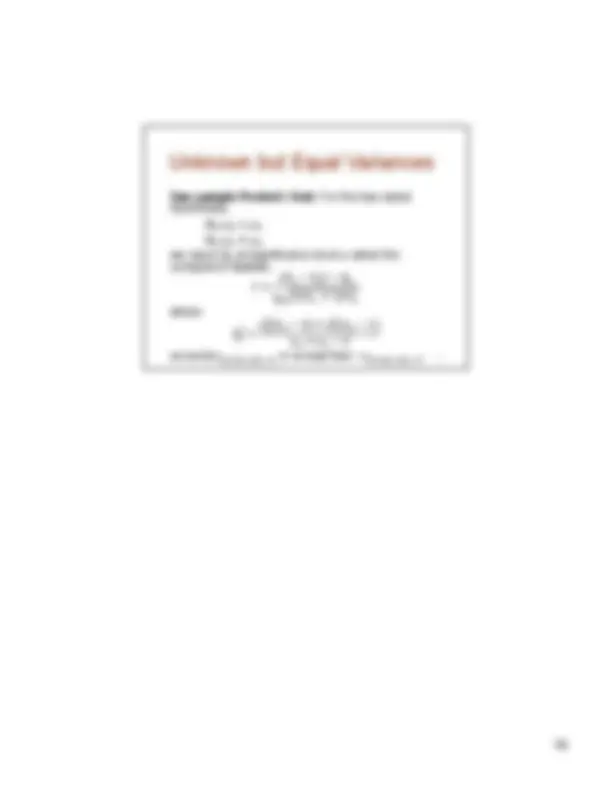
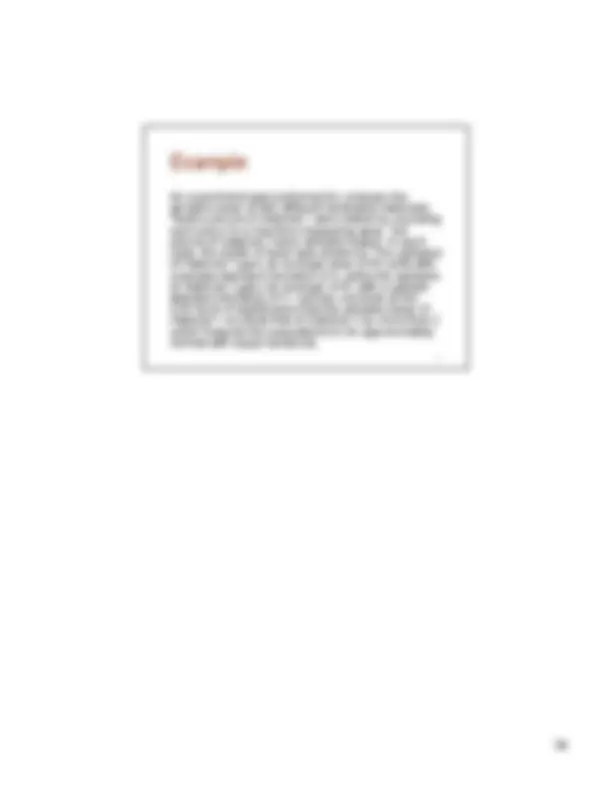
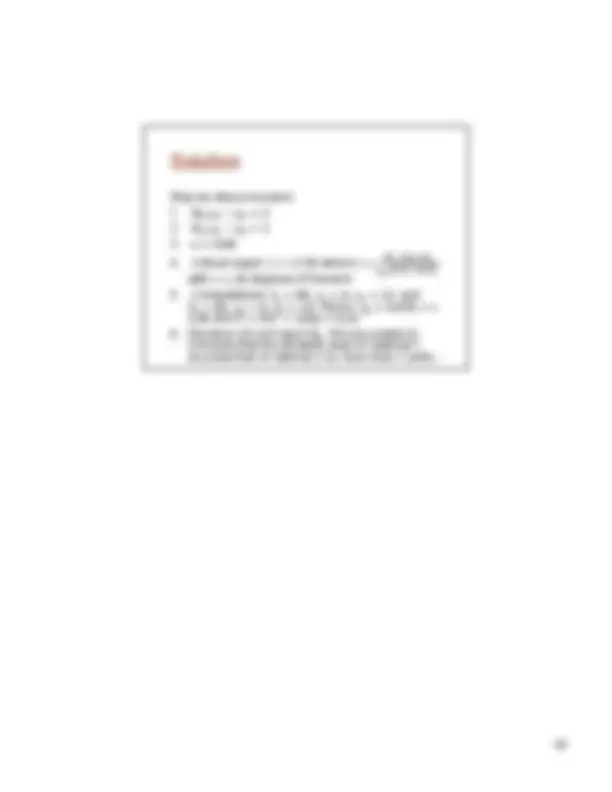
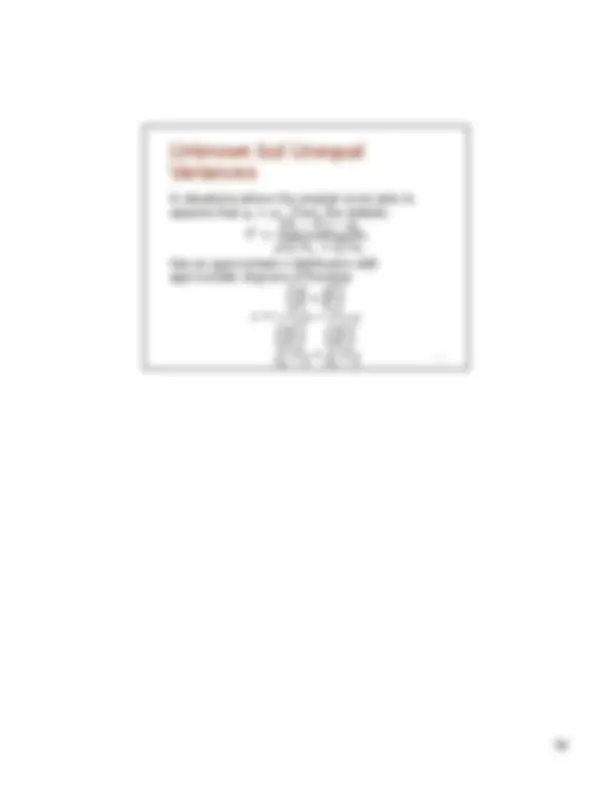
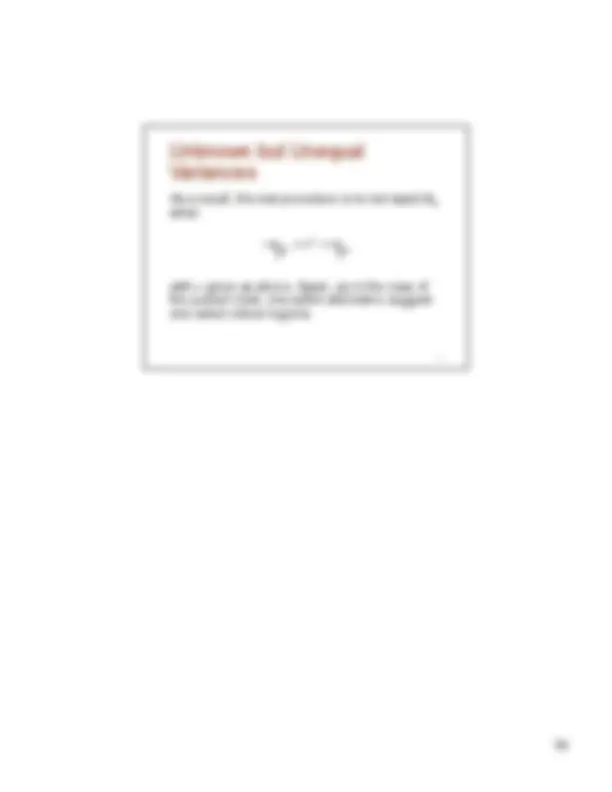
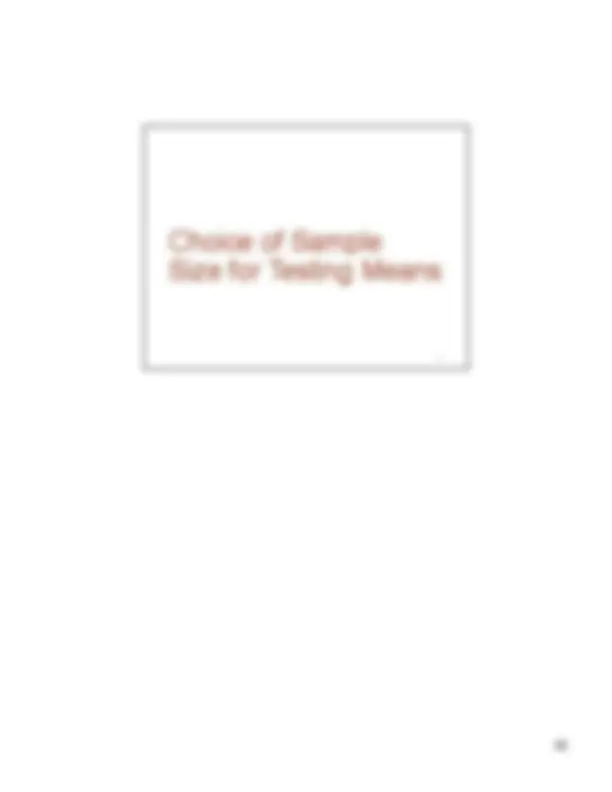
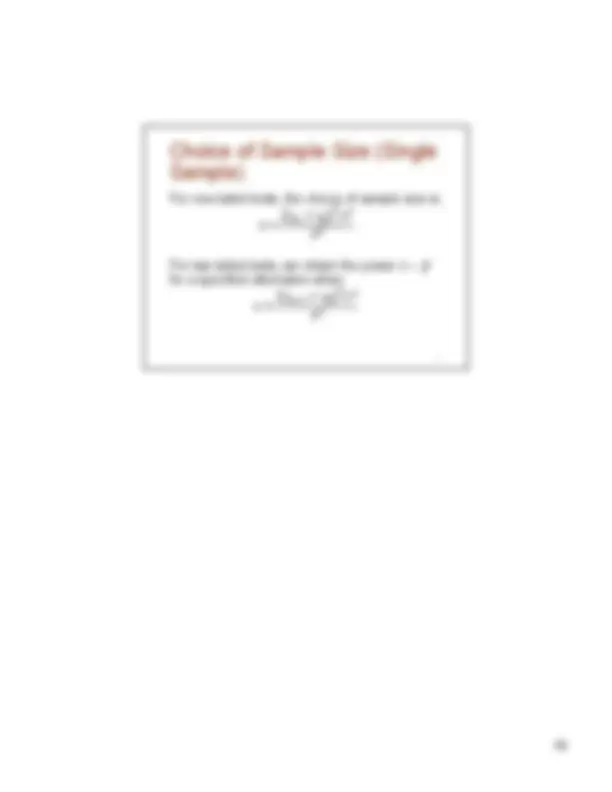
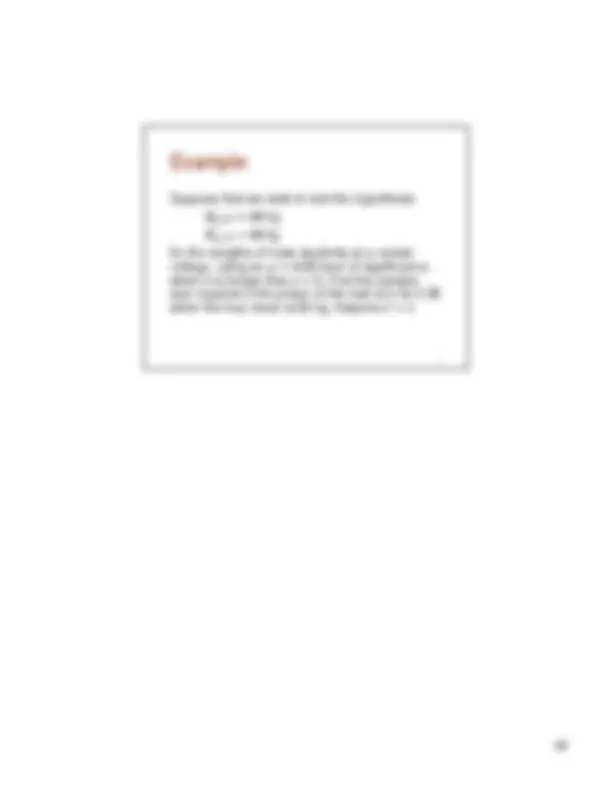
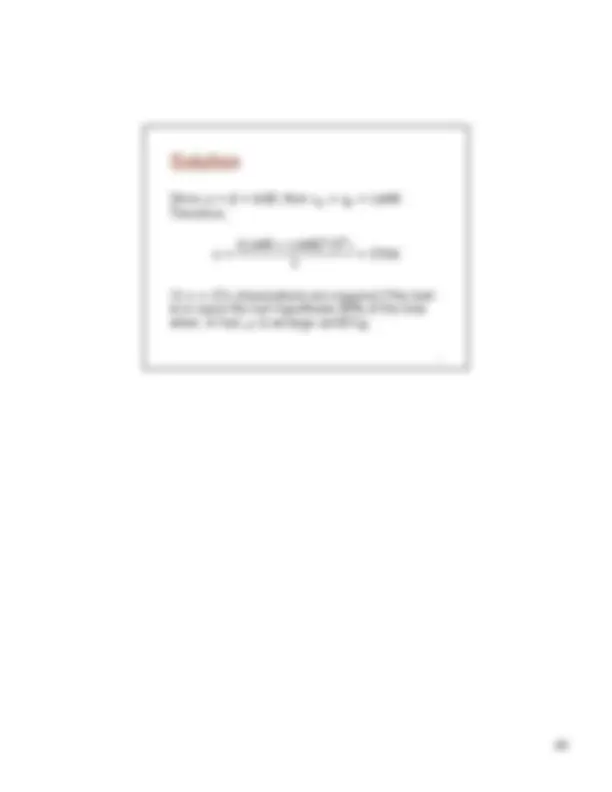


Study with the several resources on Docsity

Earn points by helping other students or get them with a premium plan


Prepare for your exams
Study with the several resources on Docsity

Earn points to download
Earn points by helping other students or get them with a premium plan
Community
Ask the community for help and clear up your study doubts
Discover the best universities in your country according to Docsity users
Free resources
Download our free guides on studying techniques, anxiety management strategies, and thesis advice from Docsity tutors
An overview of hypothesis testing in statistics, covering key concepts such as null and alternative hypotheses, type i and type ii errors, one-tailed and two-tailed tests, and the process of testing a statistical hypothesis. It includes examples related to vaccine effectiveness, average weights, and breaking strength of fishing lines. The document also discusses the importance of sample size in reducing errors and provides procedural steps for classical and p-value approaches to hypothesis testing. It is a useful resource for understanding the fundamentals of statistical hypothesis testing and its applications. Suitable for students and researchers in fields such as engineering, statistics, and data analysis, providing a solid foundation for understanding and applying hypothesis testing techniques in various contexts. It also covers the choice of sample size for testing means, providing practical guidance for designing experiments and studies.
Typology: Slides
1 / 63

This page cannot be seen from the preview
Don't miss anything!
























































EM 7: Engineering Data Analysis Second Semester, 2019- Pamantasan ng Lungsod ng Valenzuela
10
Example: A certain type of cold vaccine is known to be only 25% effective (𝑝 = 0.25) after a period of 2 years. To determine if a new and somewhat more expensive vaccine is superior in providing protection against the same virus for a longer period of time, suppose that 20 people are chosen at random and vaccinated. If more than 8 (randomly decided, but somewhat reasonable) of those receiving the new vaccine surpass the 2-year period without contracting the virus, the new vaccine will be considered superior to the one presently in use. 11
The test statistic on which we base our decision is X, which is the number of individuals who receive protection from the new vaccine for a period of at least 2 years. Possible values of X from 0-20, are divided into two groups: those numbers less than or equal to 8 and those greater than 8. 13
All possible scores greater than 8 constitute the critical region. The last number that we observe in passing into critical region (also 8) is called the critical value. Therefore, if 𝑥 > 8, we reject 𝐻 in favor of the alternative hypothesis 𝐻ଵ. If 𝑥 ≤ 8, we fail to reject 𝐻. 14
A second error is committed if 8 or fewer of the group surpass the 2-year period successfully and we are unable to conclude that the vaccine is better when it actually is better (𝐻ଵ true). In this case, we fail to reject 𝐻 when in fact, 𝐻 is false. This is called a type II error. 16 DEFINITION: Non-rejection of the null hypothesis when it is false is called a type II error.
In testing any statistical hypothesis, there are four possible situations that determine whether our decision is correct, or in error. The probability of committing a type I error, is called the level of significance, 𝛼. 17 𝐻 is true 𝐻 is false Do not reject 𝐻 Correct decision Type II error Reject 𝐻 Type I error Correct decision
The probability of committing a type II error (𝛽) is impossible to compute unless we have a specific alternative hypothesis. For example, if we test the null hypothesis that 𝑝 = 1/4 against the alternative hypothesis that 𝑝 = 1/2, then we can compute the probability of not rejecting 𝐻 when it is false. That is the probability of obtaining 8 or fewer in the group that surpass the 2-year period when 𝑝 = 1/2. 𝛽 = 𝑃 𝑡𝑦𝑝𝑒 𝐼𝐼 𝑒𝑟𝑟𝑜𝑟 = 𝑃 𝑋 ≤ 8 𝑤ℎ𝑒𝑛 𝑝 = 1 2 = 𝑏 𝑥; 20 , 1 2 ଼ ௫ୀ = 0. 2517 19
The value 0.2517 is a rather high probability, indicating a test procedure in which it is quite likely that we shall reject the new vaccine when, in fact, it is superior to what is now in use. If the testing director is willing to make a type II error if the more expensive vaccine is not significantly superior (the only time he wishes to guard against the type II error is when the true value of 𝑝 is at least 0.70): 𝛽 = 𝑃 𝑡𝑦𝑝𝑒 𝐼𝐼 𝑒𝑟𝑟𝑜𝑟 = 𝑃 𝑋 ≤ 8 𝑤ℎ𝑒𝑛 𝑝 = 1 2 = 𝑏 𝑥; 20 , 0. 7 ଼ ௫ୀ = 0. 0051 20 It is then extremely unlikely that the new vaccine would be rejected when it was 70% effective after a period of 2 years.